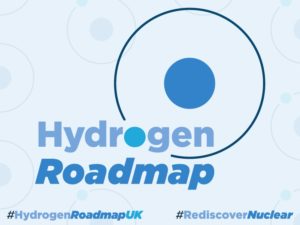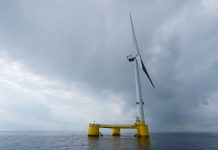 Nuclear power could produce one-third of the UK’s clean hydrogen needs by 2050, according to the Hydrogen Roadmap agreed by the Nuclear Industry Council (NIC) last week. The NIC, co-chaired by the Minister for Business, Energy and Clean Growth and the Chairman of the Nuclear Industry Association, sets strategic priorities for government-industry collaboration to promote nuclear power in the UK.
Nuclear power could produce one-third of the UK’s clean hydrogen needs by 2050, according to the Hydrogen Roadmap agreed by the Nuclear Industry Council (NIC) last week. The NIC, co-chaired by the Minister for Business, Energy and Clean Growth and the Chairman of the Nuclear Industry Association, sets strategic priorities for government-industry collaboration to promote nuclear power in the UK.
The NIC roadmap outlines how large-scale and small modular reactors (SMRs) can produce both the power and the heat necessary to produce emissions-free hydrogen, or “green hydrogen”. Nuclear stations also provide a constant, reliable supply of power that allows electrolysers to operate more efficiently, cutting production costs. Existing large-scale reactors could produce green hydrogen today at scale through electrolysis, as could the next generation of gigawatt-scale reactors. SMRs, the first unit of which could be deployed within the next ten years, would unlock further possibilities for green hydrogen production near industrial clusters.
Advanced Modular Reactors (AMRs) under development offer one of the most promising innovations for green hydrogen production, since they will create temperatures high enough to split water without diverting electricity. The ability to generate both power and hydrogen would cut costs further, add flexibility, and allow co-location of reactors with industry to aid further decarbonisation. The UK Government has targeted an AMR demonstrator by the early 2030s.
The roadmap estimates that 12-13 GW of nuclear reactors of all types could use electrolysis, steam electrolysis using waste heat and thermochemical water splitting to produce 75 TWh of green hydrogen by 2050.
The Climate Change Committee estimates that the UK could need up to 225 TWh of hydrogen per year to hit its net zero target. Rapid deployment of clean alternatives will be required, as the vast majority of the UK’s hydrogen is currently produced using fossil fuels.
The most common method, steam methane reformation, is low cost, but emits 10 kilograms of carbon dioxide for every one kilogram of hydrogen.
Since the main obstacle to green hydrogen is cost, the report identifies immediate steps to encourage nuclear-hydrogen development:
- Funding for electrolyser research and grants to zero-carbon generators of all kinds, including nuclear, to install electrolysers.
- Ambitious carbon pricing to make green hydrogen more competitive.
- Five-year R&D AMR funding settlements to support the government’s target of a demonstrator by the early 2030s.
- Inclusion of nuclear-produced hydrogen in the Net Zero Hydrogen Production Fund and the Renewable Fuels Transport Obligation.
- Agreement of a new financing model to cut the cost of capital, for new nuclear projects, and thus the cost of electricity for hydrogen production.
Commenting on the report launch, Tom Greatrex, Chief Executive of the Nuclear Industry Association, said, “Nuclear reactors offer the innovative solutions we need to decarbonise sectors beyond electricity as part of a robust net zero mix, starting today and going into the future. We are pleased the government has recognised that potential, and look forward to working with them and other partners to create a strong framework for green hydrogen production.”
Julia Pyke, Director of Financing for Sizewell C, said, “Green hydrogen from nuclear is not a distant dream but could happen now. Nuclear can offer continuous low carbon electricity to feed electrolysers alongside renewables. If Sizewell C gets the go-ahead, an electrolyser powered by Sizewell B could allow us to make fuel for H2 vehicles and plant for the construction, and it could kickstart a whole new hydrogen market in the East of England, including supporting Freeport East. In the longer term, Sizewell C could produce large amounts of green hydrogen and bring added flexibility to the energy system.”




Nuclear can never be seen as a clean or carbon free source of energy. There is a massive carbon investment in developing and maintaining the necessary infrastructure. This is greenwashing by sales pressure!
Of course nuclear power is a carbon free source of energy; it doesn’t emit any fossil carbon. It is not a clean source of energy because of the residual radioactive waste. Nuclear power will become a clean source of power when commercial fusion power replaces it, which might start by 2050.
The interesting point raised in this report is the potential of nuclear power to split water into hydrogen and oxygen which requires a lot of energy. The report only mentions the high temperature cracking of water (as steam) which requires very high temperatures over 2,000 Celsius; a more practical way is to electrolyse steam at high temperature, say 800 – 1000 Celsius from a nuclear reactor as this reduces the power needed from the electricity and the thermal energy avoids all the losses along the pipeline from heat to steam to turbines to generation. Using nuclear heat and green electricity together is more thermodynamically efficient than electrolysis at room temperature.